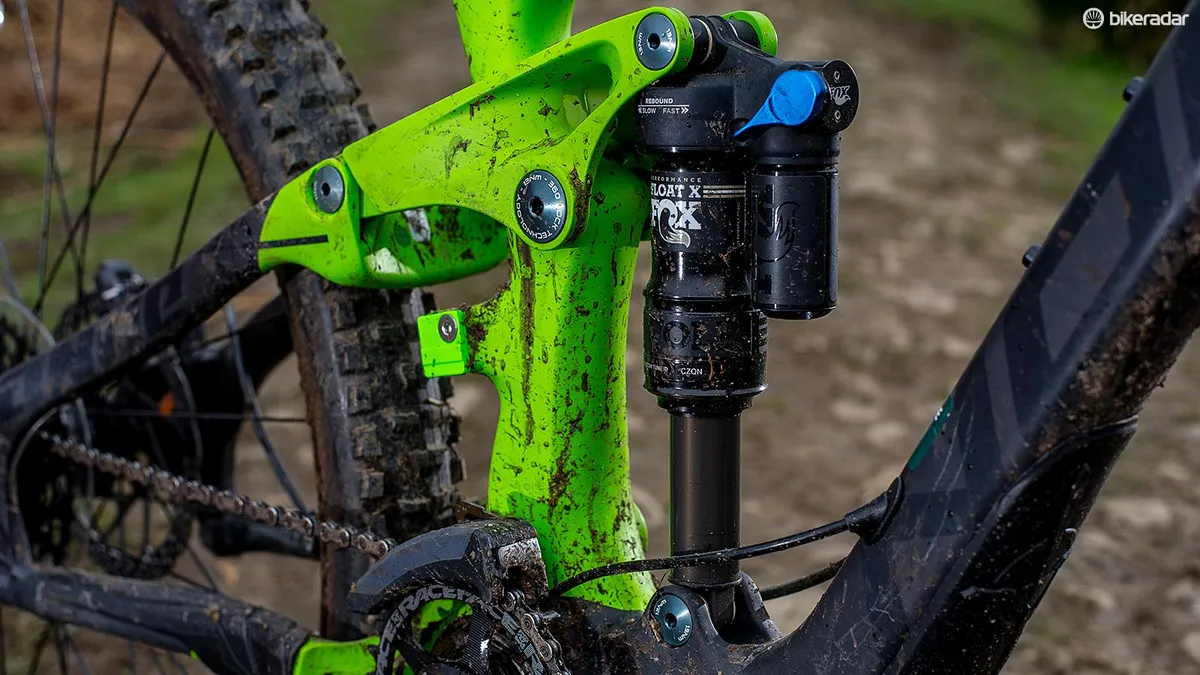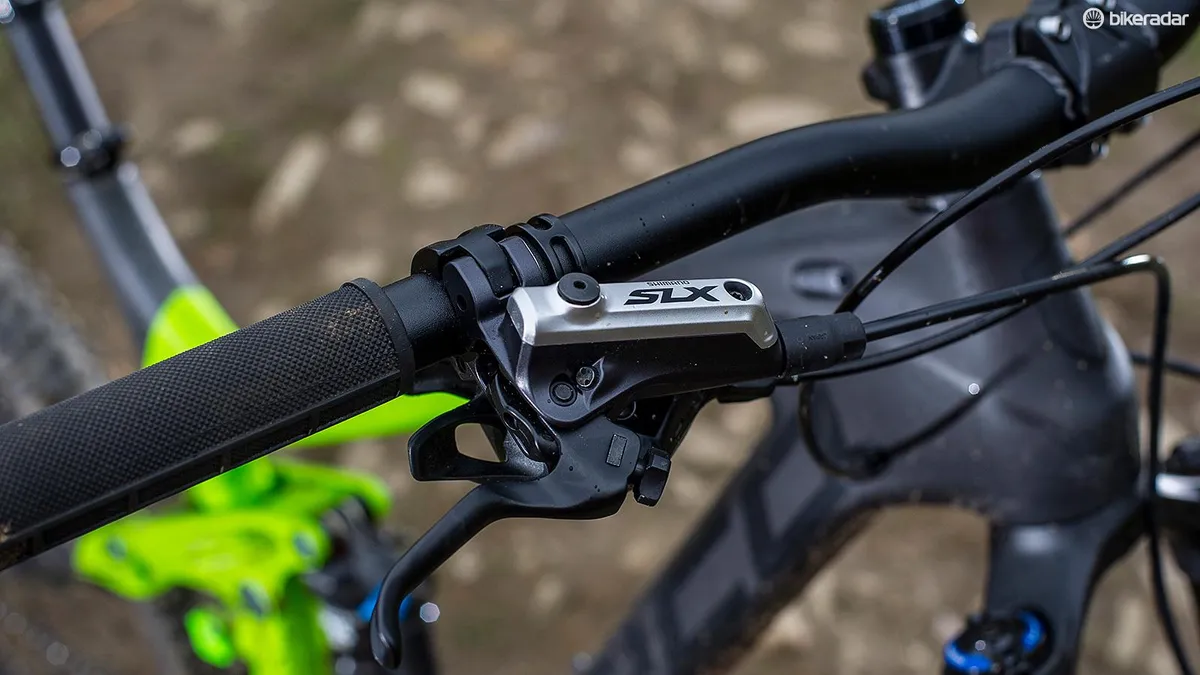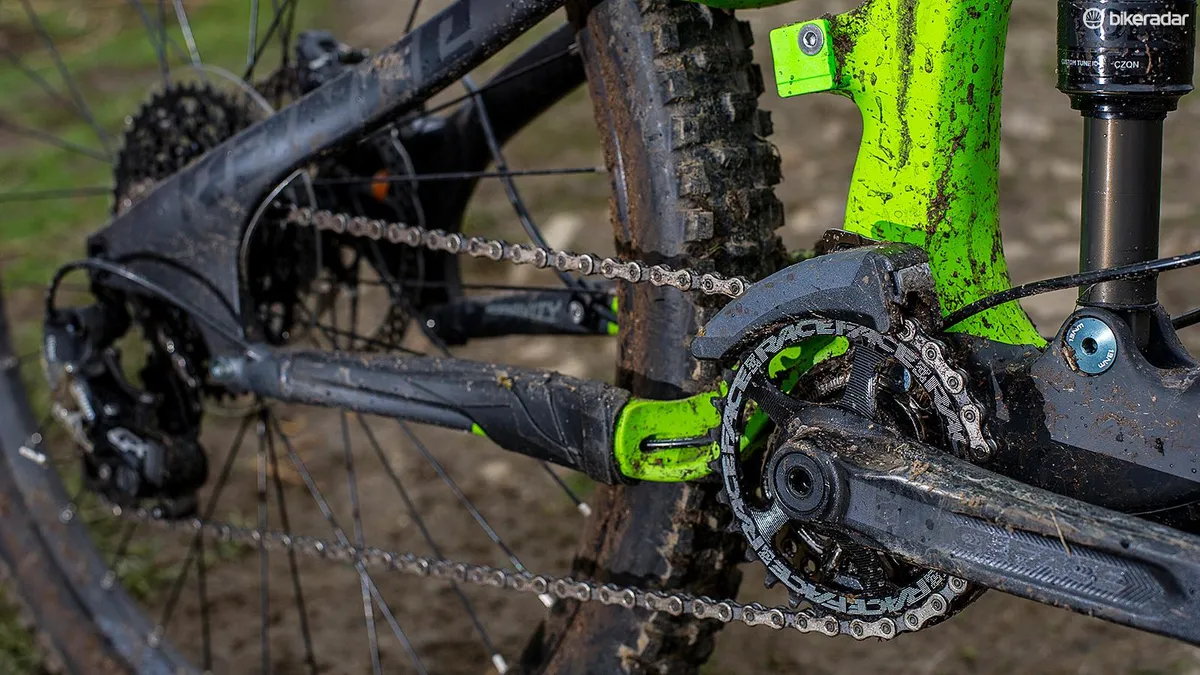Norco’s Range is solidly surefooted no matter how big the terrain. Its high weight and soft feel mean it lacks spark and focused authority when you want to light it up though.
Sturdy chassis draped in middling kit
While some designers use carbon to save weight, Norco have stayed on the sturdy side with the Range. The chunky size-specific frame tubes use a high-strength ‘ArmorLite’ resin, the bike’s belly is protected by a thick impact guard and the asymmetric alloy chainstays are buried under rubber bumpers.
A rear pivot ahead of and below the 142x12mm dropouts creates Norco’s ‘ART’ variant on the classic Horst Link system. The Fox Float X piggyback shock delivers 160mm (6.3in) of rear travel via a rocker on the kinked seat tube. Neat plugs seal the internal control routing, and the screw-in BB is a longevity bonus too. The Norco also has ISCG tabs for its e*thirteen chain guide.
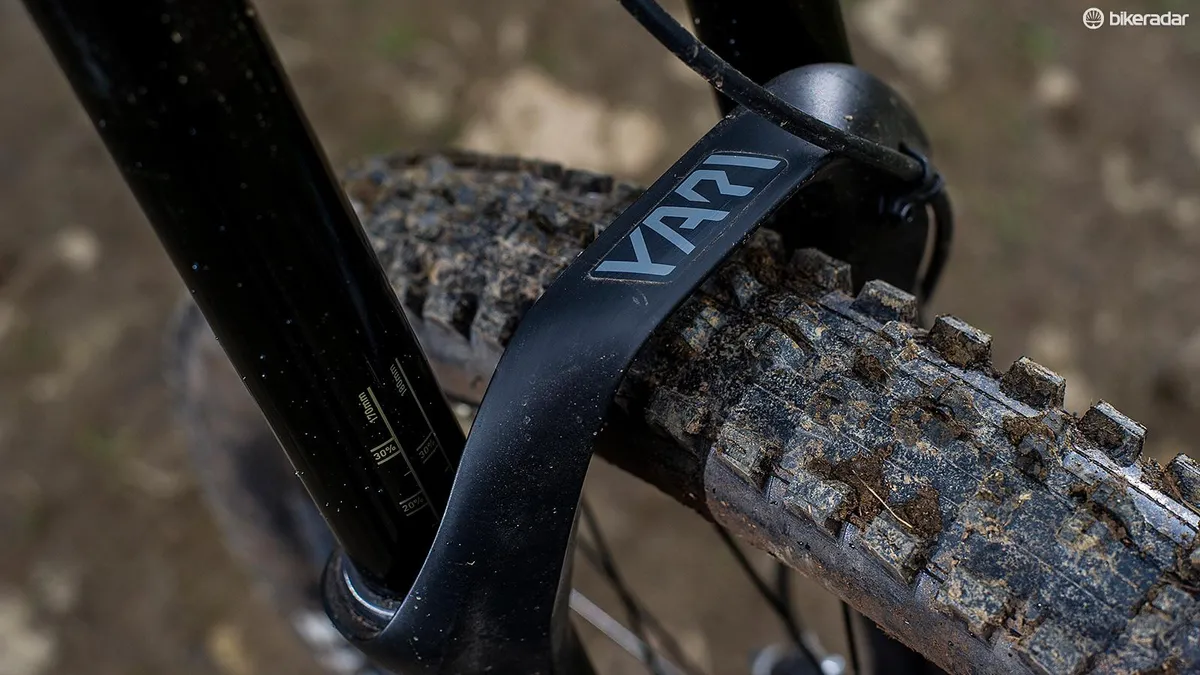
The extended seat tower allows a low standover height but slopes back dramatically. This makes the front end feel light when in the saddle and means that the reach and wheelbase are relatively short by modern standards despite the long top tube.
The thick legged, 170mm (6.7in) travel RockShox Yari fork gives the Range plenty of impact appetite but it’s – understandably – less smooth and controlled than the Pikes and Lyriks you'll find on some of the Range's competitors. Similarly, the Performance-series Fox shock isn’t quite as responsive and consistent as the RockShox dampers specced elsewhere, and the SRAM GX drivetrain with Race Face Æffect cranks is a grade below an X1/Turbine combo.

The SLX brakes have split-pin (rather than bolt) secured, non finned Deore pads and rotors, making them more likely to cook on long descents. The Norco bar is plenty wide but the stem is scrawny and the KS eTen post only has a 100mm drop. While the Maxxis High Roller tyres give plenty of grip, chunky rims and straight-gauge spokes make for a hefty wheelset on an already beefy bike.
Sluggish climber
That weight is obvious when trying to accelerate, climb or, at worst, do both together, and it wasn’t long before the Norco lost ground to the lighter bikes were riding it with – Canyon's excellent Strive CF 8.0 Race, for one – on switchback climbs. Unless you flick the shock into ‘firm’ mode – at which point it becomes clunky over roots and rocks – it’s soft and bob prone through the pedals too. Add the fact that the backward-set seat lifts the front wheel up rather than keeping it gripping, and trying to sustain speed and an accurate climbing line is a patience-challenging exercise.
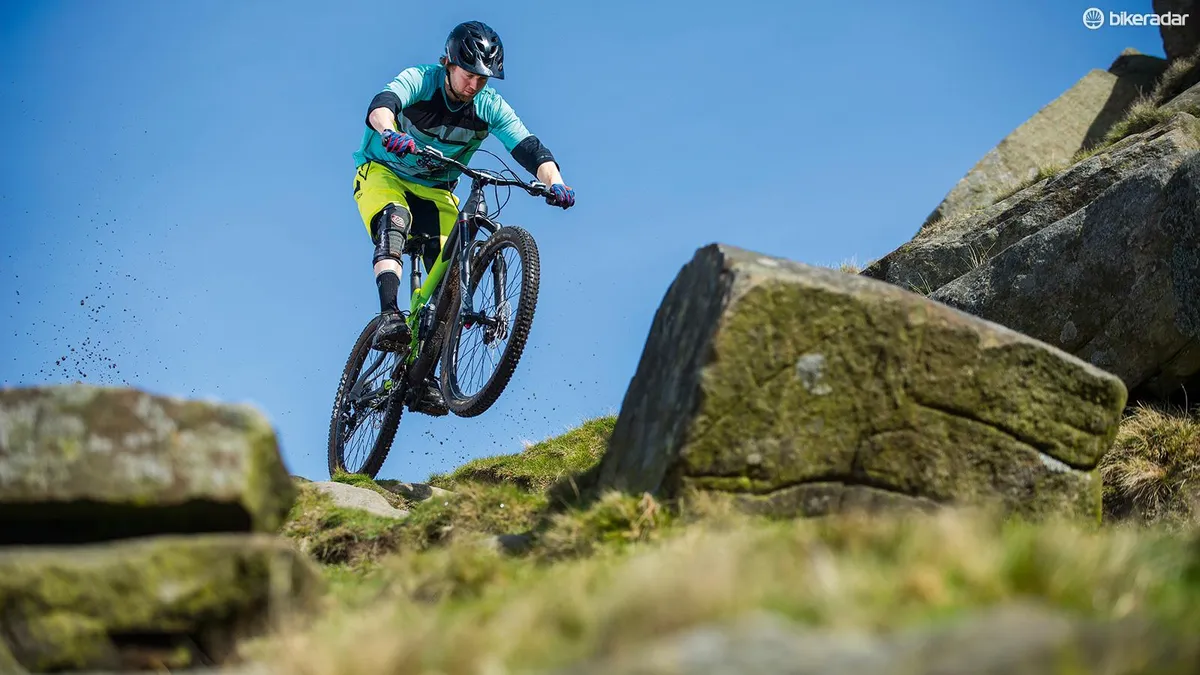
If you leave it in ‘trail’ mode the EVOL shock gives plenty of adhesion and starts firming up at the right point for reasonable cornering support. Wide rims mean you can lower tyre pressures in confidence too, so if you’re happy to just swing smoothly down the trail the Norco feels friendly and forgiving as long as things aren’t happening too quickly.
Once the impact rate gets hectic, though, the Motion Control fork damper and Fox rear shock get caught out by stutter bumps and slams annoyingly often, causing the Norco to lose noticeable speed in the process.
While the carbon mainframe helps dampen the lumps that do make it past the suspension, the Range lacks the precise poise and aggressive stiffness that makes the best bikes in its class so much fun to push hard. The slack front end is naturally stable but the short reach means you need to push your weight forward onto the fork when descending or pushing hard through corners to stop it wandering wide and it never feels as locked into the trail as longer bikes.
Reluctant acceleration between corners or into hips and lips doesn’t help ambient enthusiasm levels either, and while it’s fine for cruising there are better bikes to choose from if you prefer to feel like the pilot, not a passenger.

